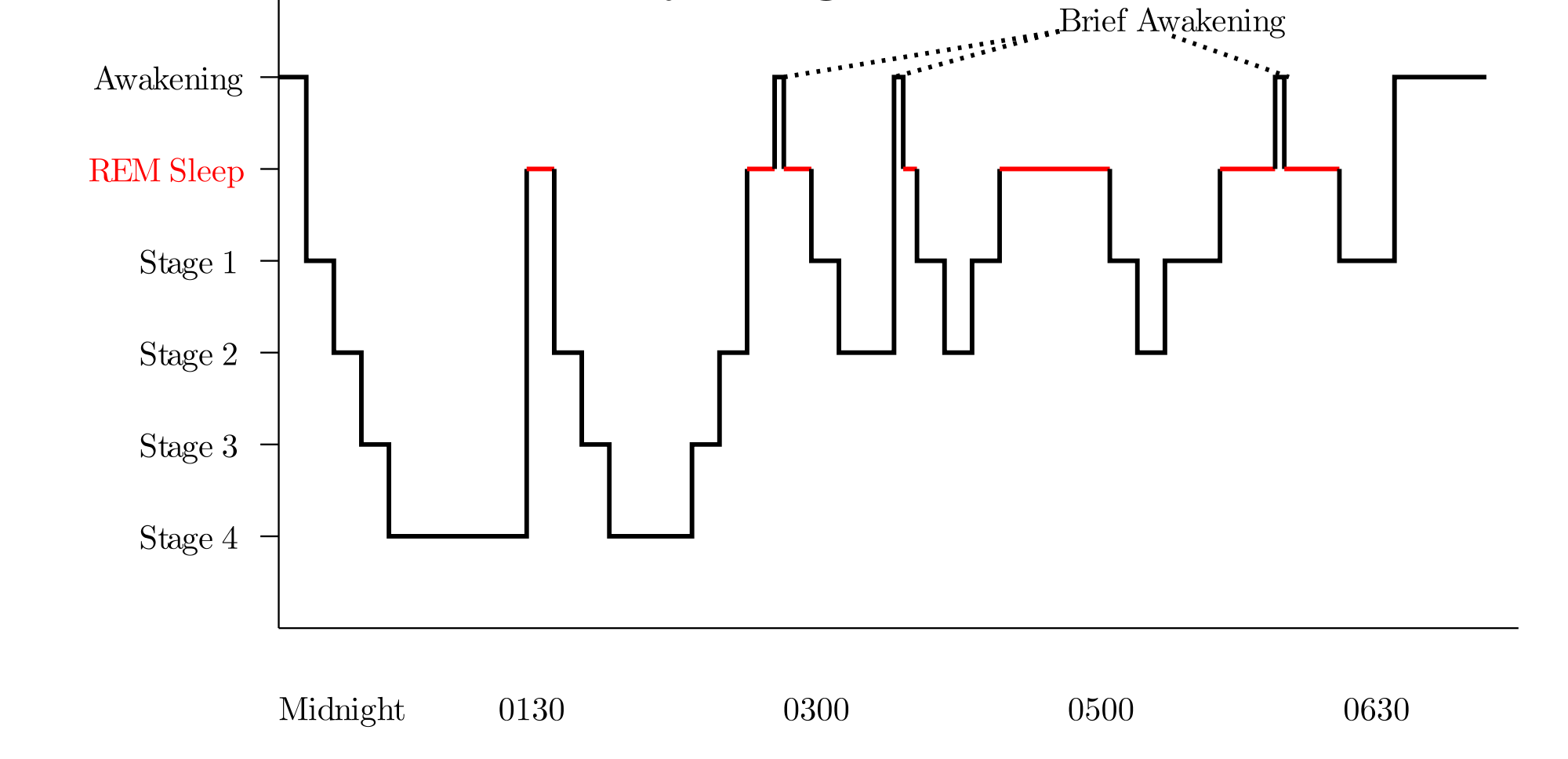Your biological clock — or circadian clock from the Latin circa for about and dies for day — is a biorhythm of which the cycle has a duration of 1 day. This clock is regulated by processes in the brain that react to the time you are already awake and the changes in light and darkness. At night, your body reacts to a lack of daylight by making melatonine, a hormon that makes you sleepy. During the day, the sunlight makes your brain stop making melatonine, which makes you feel awake and alert.
A human's internal clock can be disturbed by various factors: night work, traveling over multiple time zones or an irregular sleep pattern. This can make you feel groggy, disoriented or sleepy at inconvenient times. The production of melatonine can also be disturbed by a lack of sunlight during the day or augmented exposure to artificial light during the night, especially light of electronic devices such as TVs, computers, tablets and mobile phones.
You could assume that once you go to bed, you will soon fall into a deep sleep that lasts all night until you wake up again. The sleep cycle, however, is a lot more complicated than that. During the night, your sleep follows a predictable pattern, that moves to and fro between a deep sleep and more alert moments during which you are dreaming (REM sleep). The stages of REM sleep and non-REM sleep form the entire sleep cycle. Every sleep cycle typically lasts about 90 minutes and repeats itself ideally four to six times a night. How long you spend in every sleeping condition, changes as the night continues. The biggest part of deep sleep, for example, occurs during the first part of sleep. Later on in the sleep, the periods of REM sleep last longer, alternating with stage 2 sleeping periods. This explains why you wake up faster in the early hours, when you are sensitive to waking up in the middle of the night, rather than when you just fell asleep.

Even if you enjoyed a long sleep, it can be difficult to get out of bed when the alarm clock goes off in the middle of a deep sleeping stage (stage 3). If you want to make waking up less painful — or if you can only sleep a short amount of time — try setting your alarm clock so that you sleep a multiple of 90 minutes, this being the length of the average sleeping cycle. For example, if you go to bed at 10:00 PM, try setting your alarm clock at 05:30 AM (after 7 hours of sleep) rather than 06:00 AM of 06:30 AM. You might feel more awake at 05:30 than if you had slept half an hour or an hour longer, because you wake up at the en of a sleeping cycle when the body and brain are close to awakeness. There even are mobile apps1 that follow your sleeping cycle precisely, and determine when your alarm clock should go off.
Input
The input consists of four natural numbers, each on a separate line. The first two numbers represent the hour and minute of the moment you fall asleep (or think you'll fall asleep), and the last numbers are the hour and minute of the moment you want to wake up at the earliest. Both times should be expressed according to a 24-hour-clock, i.e. hours between 0 and 23 and minutes between 0 and 59.
Output
As output, you have to write out a line with the ideal moment to wake up. This is the first moment in time from the time you gave up as the time you want to wake up at the earliest, that gives you a duration of sleep that is a multiple of 90 minutes. This time should be expressed on a 24-hour-clock, i.e. hours between 0 and 23 and minutes between 0 and 59. The hours and minutes of the time should be separated by a double point and both numbers should be expressed with two digits, using a leading zero if necessary.
Example
Input:
22
37
6
0Output:
06:07